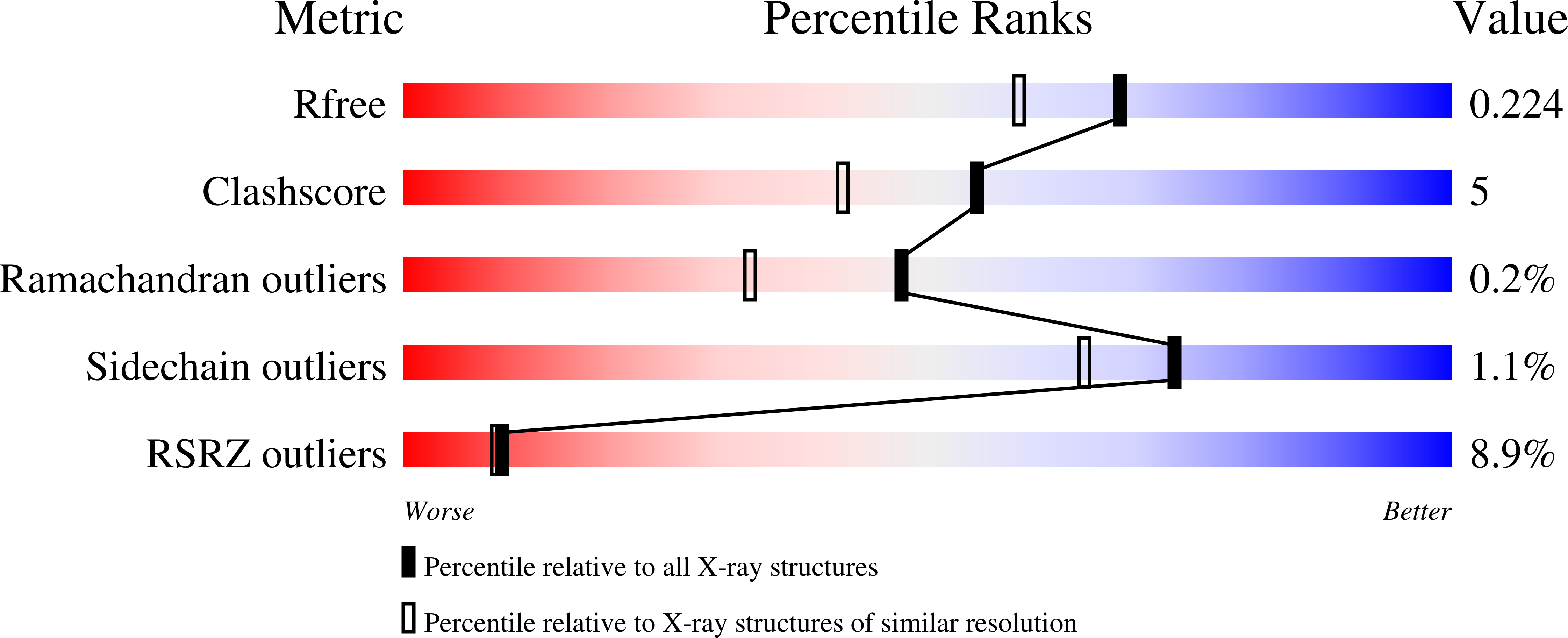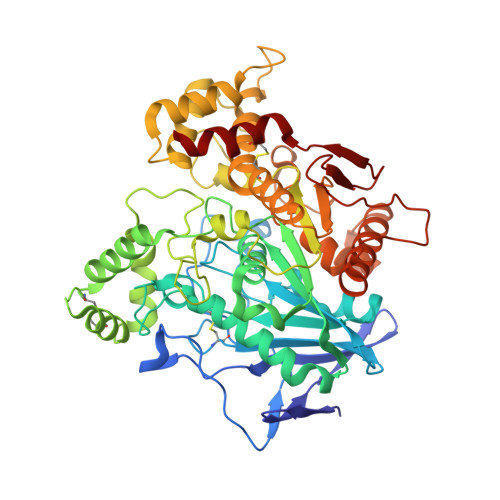Fine-Tuning the Biological Profile of Multitarget Mitochondriotropic Antioxidants for Neurodegenerative Diseases.
Chavarria, D., Da Silva, O., Benfeito, S., Barreiro, S., Garrido, J., Cagide, F., Soares, P., Remiao, F., Brazzolotto, X., Nachon, F., Oliveira, P.J., Dias, J., Borges, F.(2021) Antioxidants (Basel) 10
- PubMed: 33672269
- DOI: https://doi.org/10.3390/antiox10020329
- Primary Citation of Related Structures:
6ZWE, 6ZWI - PubMed Abstract:
Neurotransmitter depletion and mitochondrial dysfunction are among the multiple pathological events that lead to neurodegeneration. Following our previous studies related with the development of multitarget mitochondriotropic antioxidants, this study aims to evaluate whether the π-system extension on the chemical scaffolds of AntiOXCIN2 and AntiOXCIN3 affects their bioactivity and safety profiles. After the synthesis of four triphenylphosphonium (TPP + ) conjugates (compounds 2 - 5 ), we evaluated their antioxidant properties and their effect on neurotransmitter-metabolizing enzymes. All compounds were potent equine butyrylcholinesterase ( eq BChE) and moderate electric eel acetylcholinesterase ( ee AChE) inhibitors, with catechols 4 and 5 presenting lower IC 50 values than AntiOXCIN2 and AntiOXCIN3, respectively. However, differences in the inhibition potency and selectivity of compounds 2 - 5 towards non-human and human cholinesterases (ChEs) were observed. Co-crystallization studies with compounds 2 - 5 in complex with human ChEs ( h ChEs) showed that these compounds exhibit different binging modes to h AChE and h BChE. Unlike AntiOXCINs, compounds 2 - 5 displayed moderate human monoamine oxidase ( h MAO) inhibitory activity. Moreover, compounds 4 and 5 presented higher ORAC-FL indexes and lower oxidation potential values than the corresponding AntiOXCINs. Catechols 4 and 5 exhibited broader safety windows in differentiated neuroblastoma cells than benzodioxole derivatives 2 and 3. Compound 4 is highlighted as a safe mitochondria-targeted antioxidant with dual ChE/MAO inhibitory activity. Overall, this work is a contribution for the development of dual therapeutic agents addressing both mitochondrial oxidative stress and neurotransmitter depletion.
Organizational Affiliation:
CIQUP/Department of Chemistry and Biochemistry, Faculty of Sciences, University of Porto, 4169-007 Porto, Portugal.

























